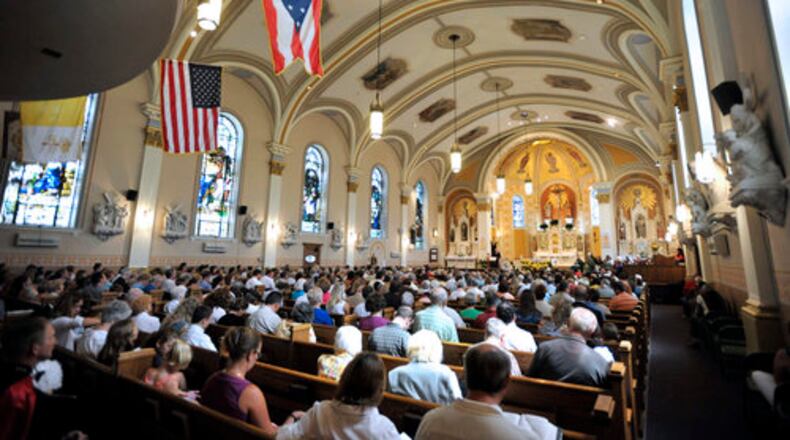The move is a significant step in the archdiocese’s effort to close or consolidate a percentage of regional Catholic parishes, an imperative created by fewer men becoming Catholic priests and by priests who are increasingly stretched thin, Catholic leaders say.
A “current realities” report the archdiocese released earlier this year said there are about 160 priests serving more than 200 parishes in the Cincinnati, Dayton and Springfield areas. Their ages range from 29 to 82 with a median age of 58, the report said.
About 16% of priests are eligible to retire, the report adds.
The report estimates that in 10 years about 125 priests will be available in the year 2031.
Called “Beacons of Light,” a draft of the reorganization plan was released Oct. 1. After a comment period of about 20 days, more than 200 parishes were grouped together in about 60 units called “families,” and leaders within those groups are now expected to decide how to use the resources assigned to them.
One published estimate of the potential impact of the report found that some 70% of area parishes could be directed toward eventual closure, merger or otherwise diminished use, depending on decisions made in those local groups.
“If every family does in fact become one ... parish, that would be the result,” archdiocese spokeswoman Jennifer Schack said in an interview last week.
However, she also cautioned that the archdiocese’s expectation at the moment is that most families will likely retain most of their churches.
Even if every family of parishes becomes one “canonical” parish, more than one church building may remain open within some groups, she said. Some buildings may be set aside for lessened or different uses.
“This will involve a great deal of planning and preparation over the coming months,” Archbishop Dennis Schnurr said in a new letter shared by the archdiocese.
Schnurr was scheduled to discuss the plan at the 11 am Mass at the Cathedral Basilica of St. Peter in Chains in Cincinnati Sunday.
There is no precise deadline on when “family” units should decide which churches will close, Schack said, but she noted that project is a five-year plan. New priest assignments are expected to happen in the spring of 2022.
In a video interview released this fall, Schnurr said decisions about the fate of southwest Ohio Catholic churches will be made locally.
“We can accomplish this with fewer (church) campuses — and then there may be the decision to reduce a parish church to the status of an oratory or a chapel,” Schnurr said in the video.
He added: “But that is going to decided by the family of parishes. It’s not going to be decided by me … or the Archdiocese of Cincinnati.”
The archdiocese has not yet addressed the question of jobs and the fate awaiting more than 100 archdiocesan schools.
“This process will end up making local Catholic communities stronger, if indeed each of the parishes within the families of parishes can look beyond their own parish community,” said the Rev. Satish Joseph, pastor for the parishes of Immaculate Conception and St. Mary in Dayton, and St. Helen in Riverside.
“If this is done well, it will help the Catholic presence in the local communities become stronger and more vibrant,” he said.
Changes for Dayton- and Springfield-area churches between the draft and final plans include mainly geographic shifting.
The draft had a total of 11 families of parishes in the archdiocese’s northeast sector, which roughly corresponds to the Dayton and Springfield areas. The final plan also has 11 families there.
There is no significance in how parishes are listed within families. Priest numbers are subject to change, the archdiocese said.
About the Author


